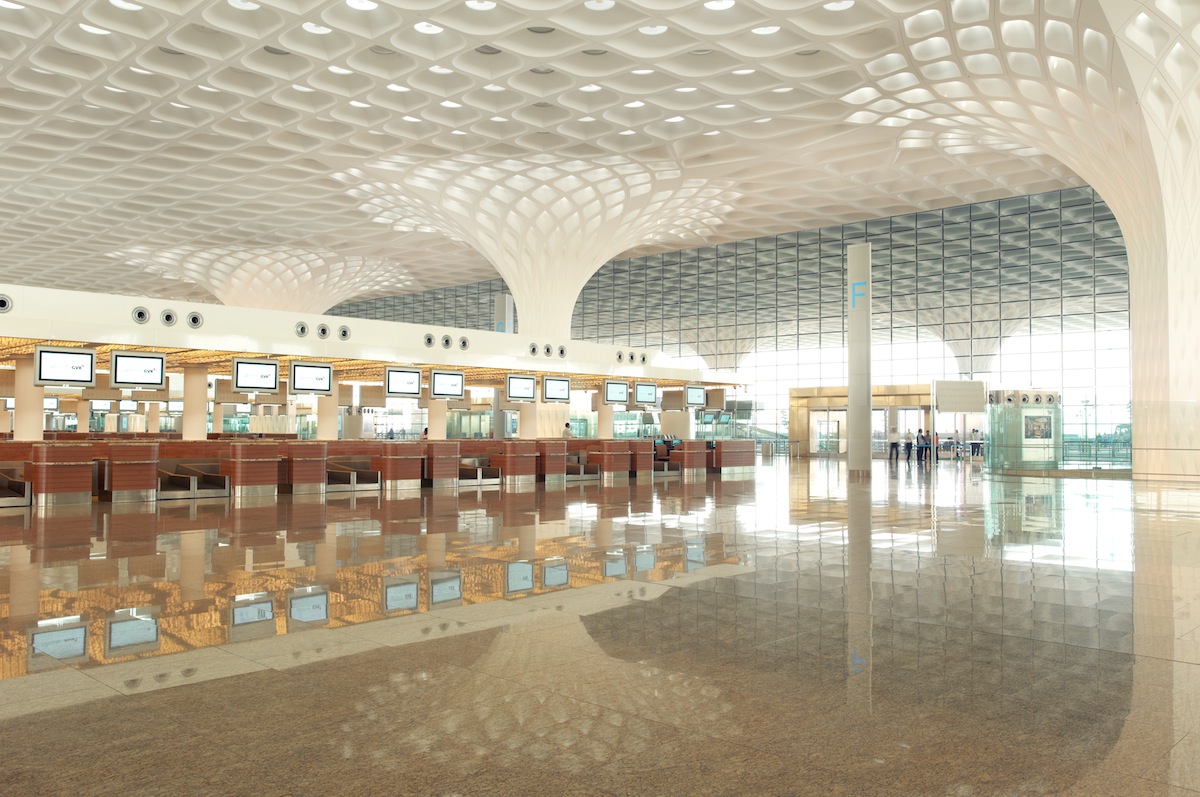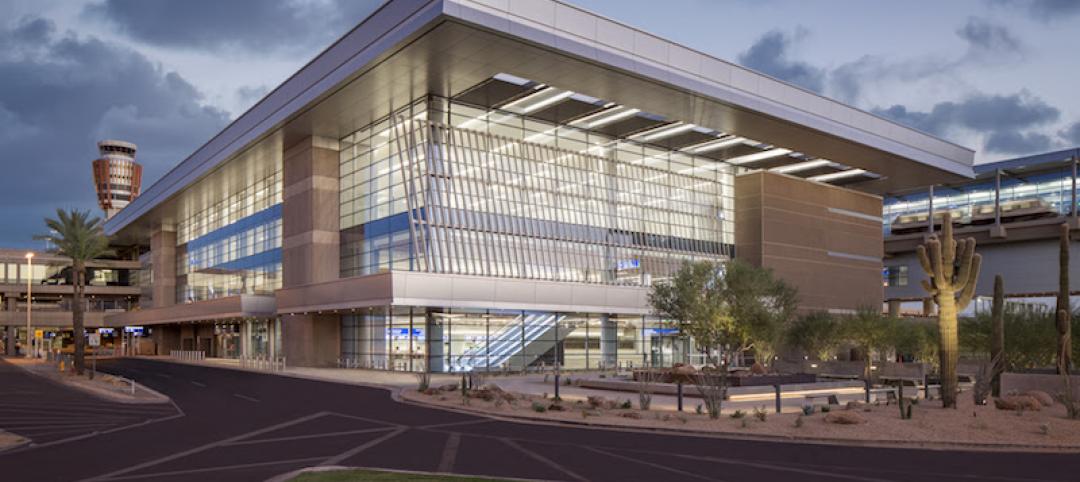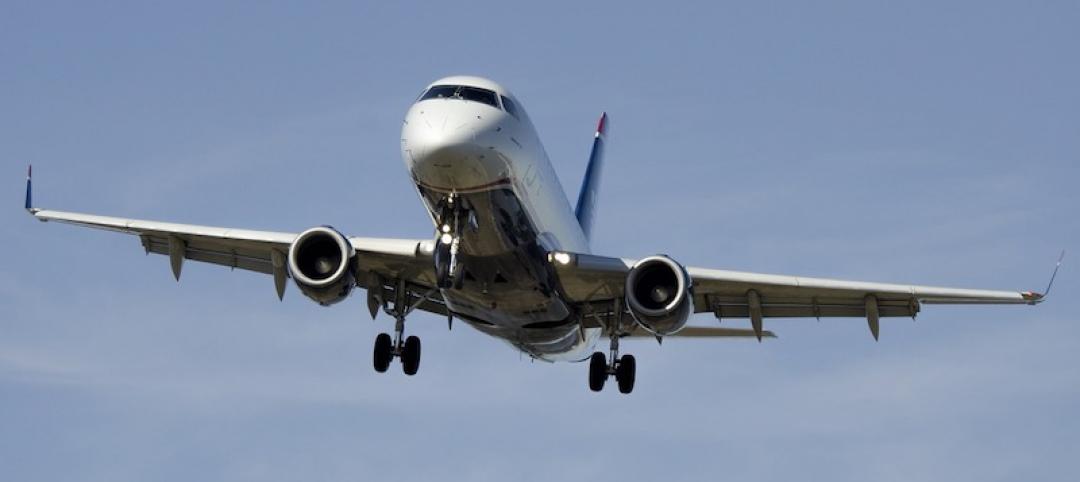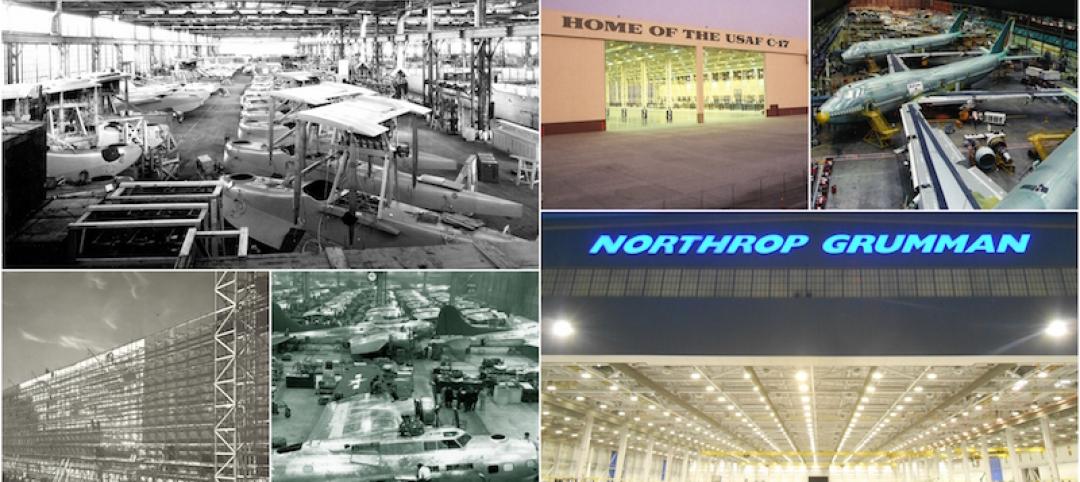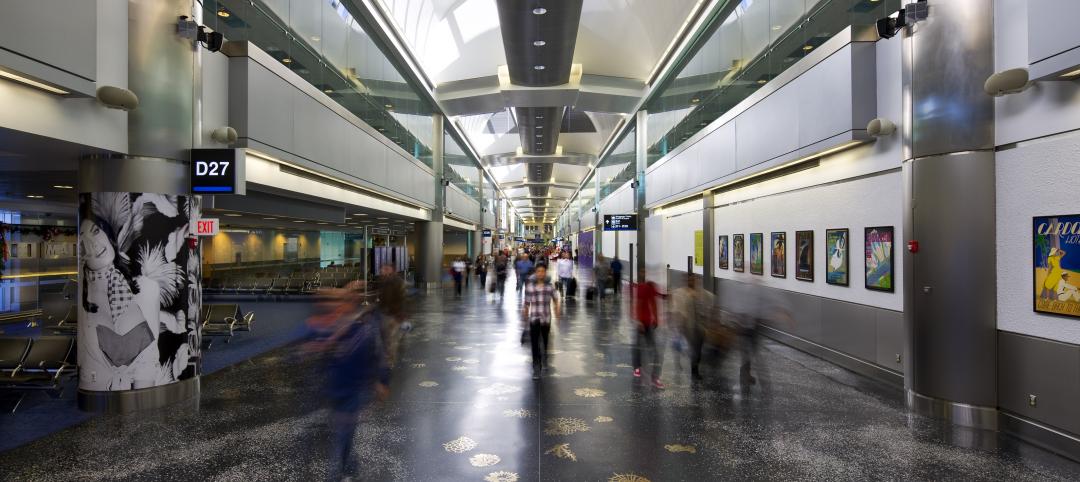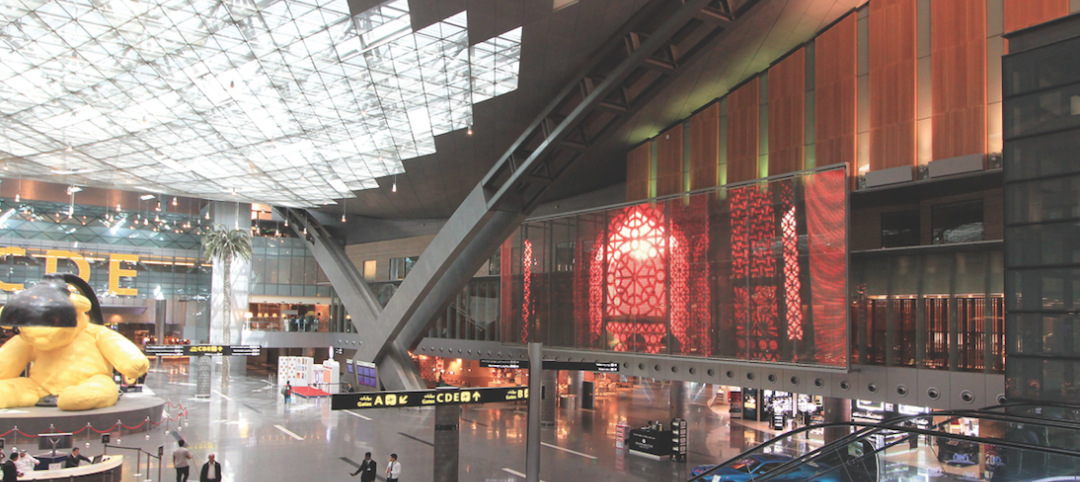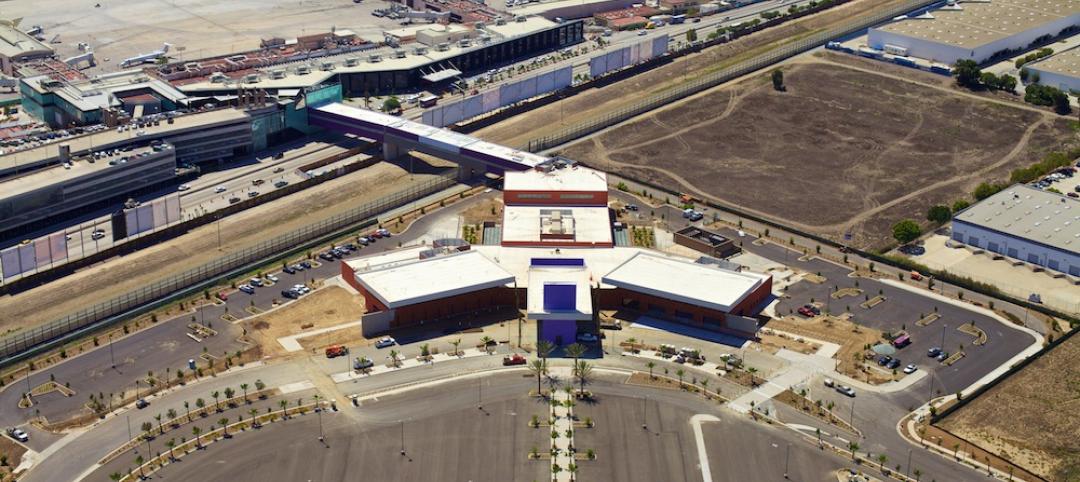A little over a month ago, Terminal 2 of Chhatrapati Shivaji International Airport was opened in Mumbai. Designed by Skidmore, Owings & Merrill (SOM), the new terminal added 4.4 million sf to accomodate 40 million passengers per year.
In a press release, Mr. G V Sanjay Reddy, the Managing Director of GVK Mumbai International Airport Pvt. Ltd. (MIAL), said that “the new Terminal 2 at CSIA is a monument to the beautiful spirit of Mumbai and its people. This terminal will make CSIA a gateway to the city of Mumbai and India with international and domestic passengers.”
The terminal merges new technology and traditional regional architecture, notably in the fractal roof canopy that runs throughout the terminal. Skylights in the entrance hall will cut energy usage by 23 percent, and responsive controls will balance external and internal light levels in order to save the maximum amount of energy.
The Building Team included:
Owner: GVK, Mumbai International Airport Pvt. Ltd.
Architect, structural engineer, MEP engineer: Skidmore, Owings & Merrill
Architect and engineer of record: Larsen & Toubro Limited
Lighting design: Brandston Partnership Inc.
Acoustics: Cerami & Associates
Communication, IT, Security & Special Systems: Mulvey & Banani
Signage & Wayfinding: Pentagram & Entro Communication
Baggage Handling: BNP Associates
Vertical Transportation: Van Deusen & Associates
Cultural Design Collaboration: Abu Jani - Sandeep Khosla
Here is SOM's press release on the new terminal:
Ten years ago, Mumbai’s Chhatrapati Shivaji International Airport welcomed six million passengers per year through its gates; today it serves nearly five times that number. With the city’s emergence as India’s financial capital and the country’s rapidly expanding and economically mobile middle class, the existing airport infrastructure proved unable to support the growing volume of domestic and global traffic, resulting in frequent delays.
By orchestrating the complex web of passengers and planes into a design that feels intuitive and responds to the region’s rocketing growth, the new Terminal 2 asserts the airport’s place as a preeminent gateway to India.

The columns are meant to invoke traditional regional architecture. Image courtesy of SOM; Photographer, Robert Polidori / © Mumbai International Airport Pvt. Ltd.
Chhatrapati Shivaji International Airport Terminal 2 adds 4.4 million square feet of new space to accommodate 40 million passengers per year, operating 24 hours a day. The terminal combines international and domestic passenger services under one roof, optimizing terminal operations and reducing passenger walking distances. Inspired by the form of traditional Indian pavilions, the new four-story terminal stacks a grand “headhouse,” or central processing podium, on top of highly adaptable and modular concourses below. Rather than compartmentalizing terminal functions, all concourses radiate outwards from a central processing core and are therefore easily reconfigured to “swing” between serving domestic flights or international flights.
But just as the terminal celebrates a new global, high-tech identity for Mumbai, the structure is imbued with responses to the local setting, history, and culture. Gracious curbside drop-off zones designed for large parties of accompanying well-wishers accommodate traditional Indian arrival and departure ceremonies.
Regional patterns and textures are subtly integrated into the terminal’s architecture at all scales. From the articulated coffered treatment on the headhouse columns and roof surfaces to the intricate jali window screens that filter dappled light into the concourses, Terminal 2 demonstrates the potential for a modern airport to view tradition anew.
The prominent location of the airport within the city of Mumbai bestows it with a strong presence within a portion of the city that is experiencing rapid growth and redevelopment. Terminal 2 is a significant part of this renaissance as an infrastructural anchor for the neighborhood, and as a landmark within the surrounding community.
By integrating into the existing transportation fabric and by furthering connectivity through the simultaneous development of a new road network to service the airport, the terminal helps knit together the historic heart of Mumbai to the south with the city’s burgeoning peripheries to the east and north. Plans are also in place for the construction of an underground metro station at the terminal’s entrance, providing further connectivity to the growing city.
A Gateway to India
All international and domestic passengers enter the terminal headhouse on the fourth floor, accessed from a sweeping elevated road. At the entrance, the lanes split, making room for wide drop-off curbs with ample space for departure rituals. From the moment of arrival, the terminal embraces travelers. Above, the headhouse roof extends to cover the entire arrivals roadway, protecting passengers and their guests from Mumbai’s heat and unpredictable monsoon weather.
A 50-foot-tall glass cable-stayed wall—the longest in the world—opens to the soaring space of the check-in hall. The transparent façade also allows accompanying well-wishers, who must remain outside of the terminal due to Indian aviation regulations, to watch as their friends and family depart.
Image courtesy of SOM; Photographer, Robert Polidori / © Mumbai International Airport Pvt. Ltd.
Once inside, travelers enter a warm, light-filled chamber, sheltered underneath a long-span roof supported by an array of multi-story columns. The monumental spaces created beneath the 30 mushrooming columns call to mind the airy pavilions and interior courtyards of traditional regional architecture. Small disks of colorful glass recessed within the canopy’s coffers speckle the hall below with light. The constellation of colors makes reference to the peacock, the national bird of India, and the symbol of the airport.
The check-in hall leads to a retail hub—a common space that allows passengers to shop, eat, and watch planes take off though expansive, floor-to-ceiling windows. Centrally located at the junction of the concourses and the terminal core, these commercial plazas provide a focal point of activity in close proximity to the gates.
Within these spaces and throughout the concourses, culturally referential fixtures and details, such as custom chandeliers inspired by the lotus flower and traditional mirror mosaic work created by local artists, ground the traveler to a community and culture beyond the airport. Regional artwork and artifacts are displayed on a central, multi-story Art Wall, illuminated by skylights above. The prevalence of local art and culture, coupled with the use of warm colors and elegant accents, elevates the ambience of terminal beyond the typical, often unimaginative airport experience.
Although the terminal is four stories, interconnecting light slots and multi-story light wells ensure that light penetrates into the lower floors of the building, acting as a constant reminder of the surrounding city and landscape. At dusk, illuminated from within, the terminal glows like a sculpted chandelier.
A Flexible Footprint
The construction site of the new terminal building was located in close proximity to the existing terminal which had to remain fully operational during construction. This site requirement inspired the elongated X-shape plan of the terminal, which could both mold around existing structures and incorporate modular designs to accommodate rapid and phased construction.
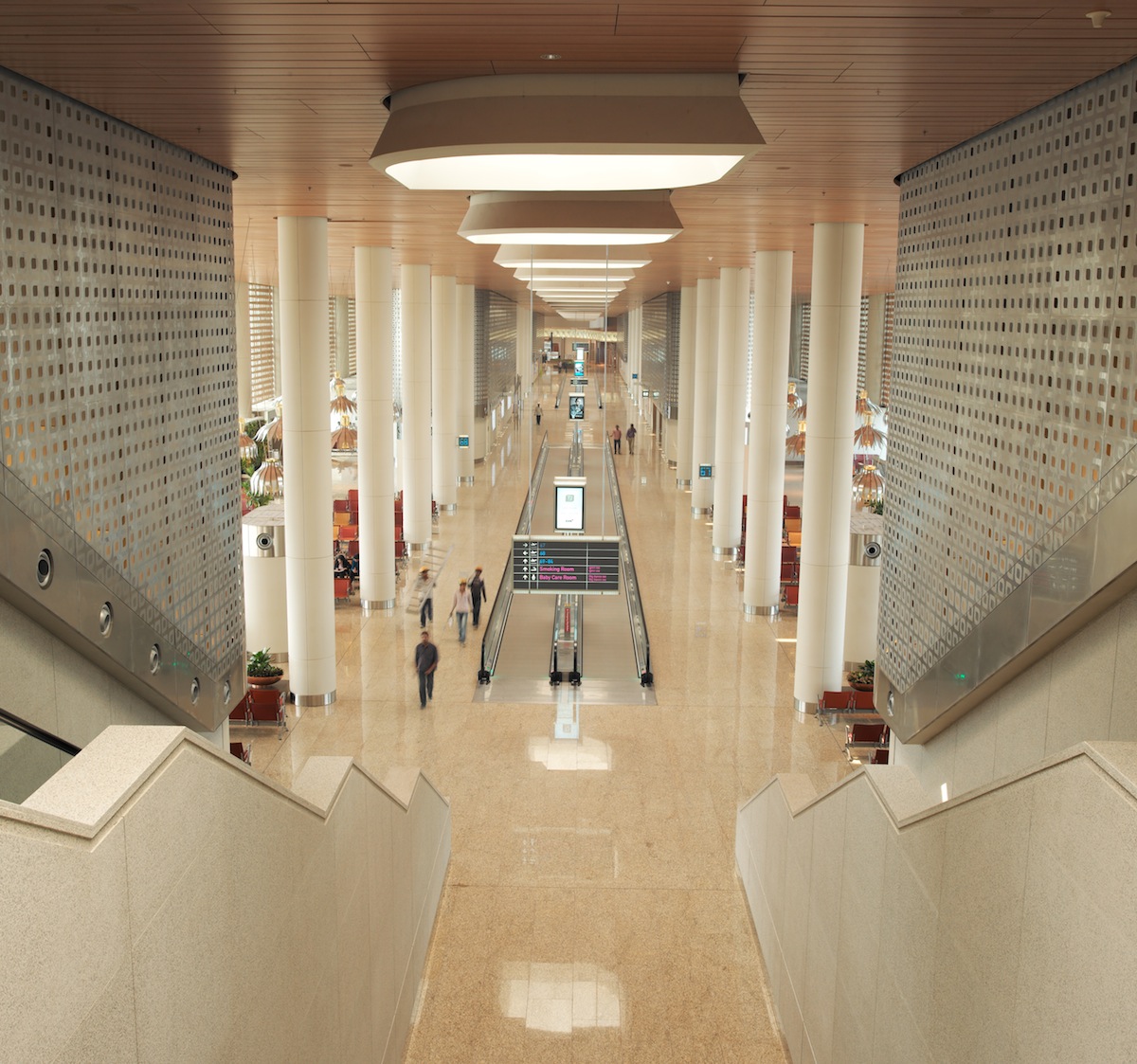
Terminal 2's perforated metal panels on curtain walls filter low sun angles in order to make spaces more comfortable for passengers during the daytime. Image courtesy of SOM; Photographer, Robert Polidori / © Mumbai International Airport Pvt. Ltd.
This innovative form also allows for the consolidation of important passenger processing, baggage handling, and retail/dining functions at the center of the terminal. On each floor, radiating piers permit the shortest possible walking distances from the center of the terminal to boarding areas, while also maximizing the terminal’s perimeter for aircraft gates.
The terminal’s roof—one of the largest in the world without an expansion joint—ensures further terminal flexibility. The long-span capabilities of the steel truss structure allow for the spacing of the thirty 40-meter columns to be far enough apart to not only give a feeling of openness to the large processing areas below but also to allow for maximum flexibility in the arrangement of ticket counters and other necessary processing facilities.
A Hub of Energy Efficiency
Terminal 2 uses a high-performance glazing system with a custom frit pattern to achieve optimal thermal performance and mitigate glare. Perforated metal panels on the terminal’s curtain wall filter the low western and eastern sun angles, creating a comfortable day-lit space for waiting passengers, and responsive daylight controls balance outdoor and indoor light levels for optimal energy savings. Strategically-placed skylights throughout the check-in hall will reduce the terminal’s energy usage by 23%.
At Terminal 2, modern materials and technologies are used to powerful effect. But while cutting-edge strategies set a new standard for sustainable, modern airport design, the terminal is as much a showpiece of the history and traditions of India and Mumbai as it is an unprecedented structural and technological achievement. Rising from the Mumbai cityscape, Chhatrapati Shivaji International Airport celebrates both India’s rich cultural heritage and the country’s increasingly global future.
The chandeliers pay homage to the lotus flower, native to this region. Image courtesy of SOM; Photographer, Robert Polidori / © Mumbai International Airport Pvt. Ltd.
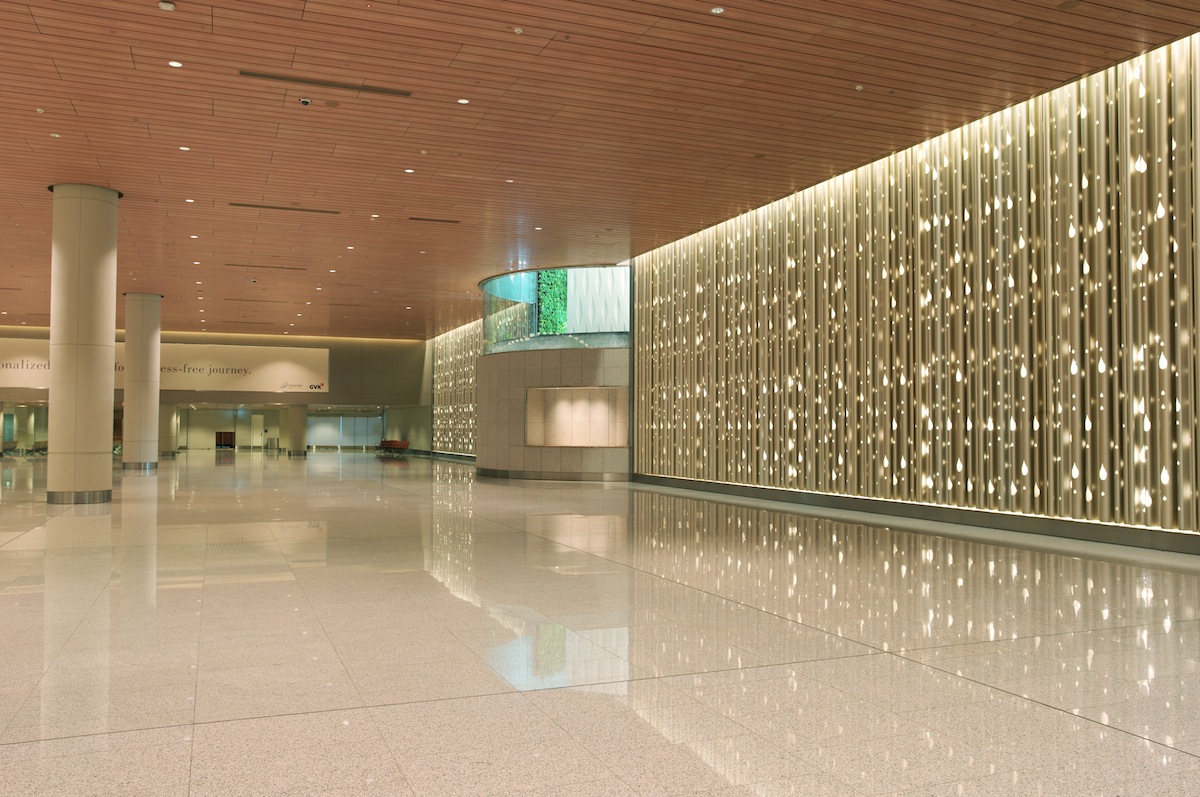
Image courtesy of SOM; Photographer, Robert Polidori / © Mumbai International Airport Pvt. Ltd.
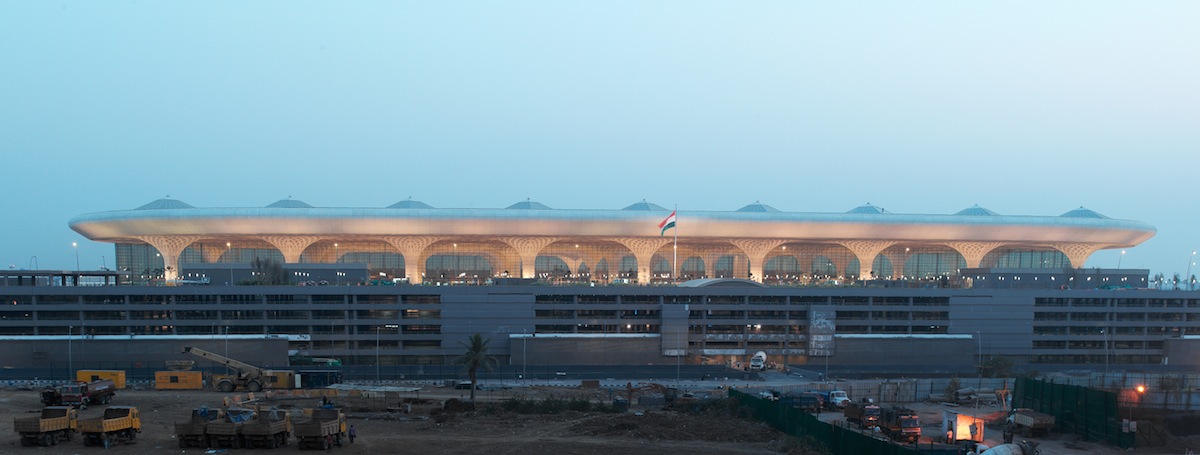
Image courtesy of SOM; Photographer, Robert Polidori / © Mumbai International Airport Pvt. Ltd.
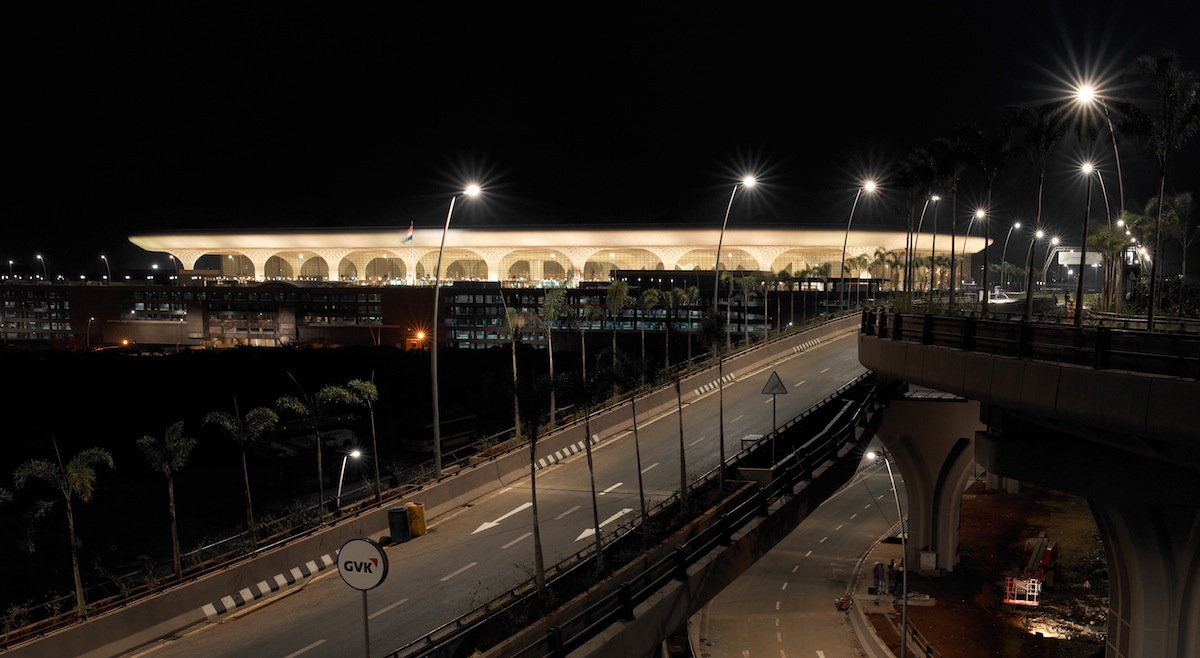
Image courtesy of SOM; Photographer, Robert Polidori / © Mumbai International Airport Pvt. Ltd.
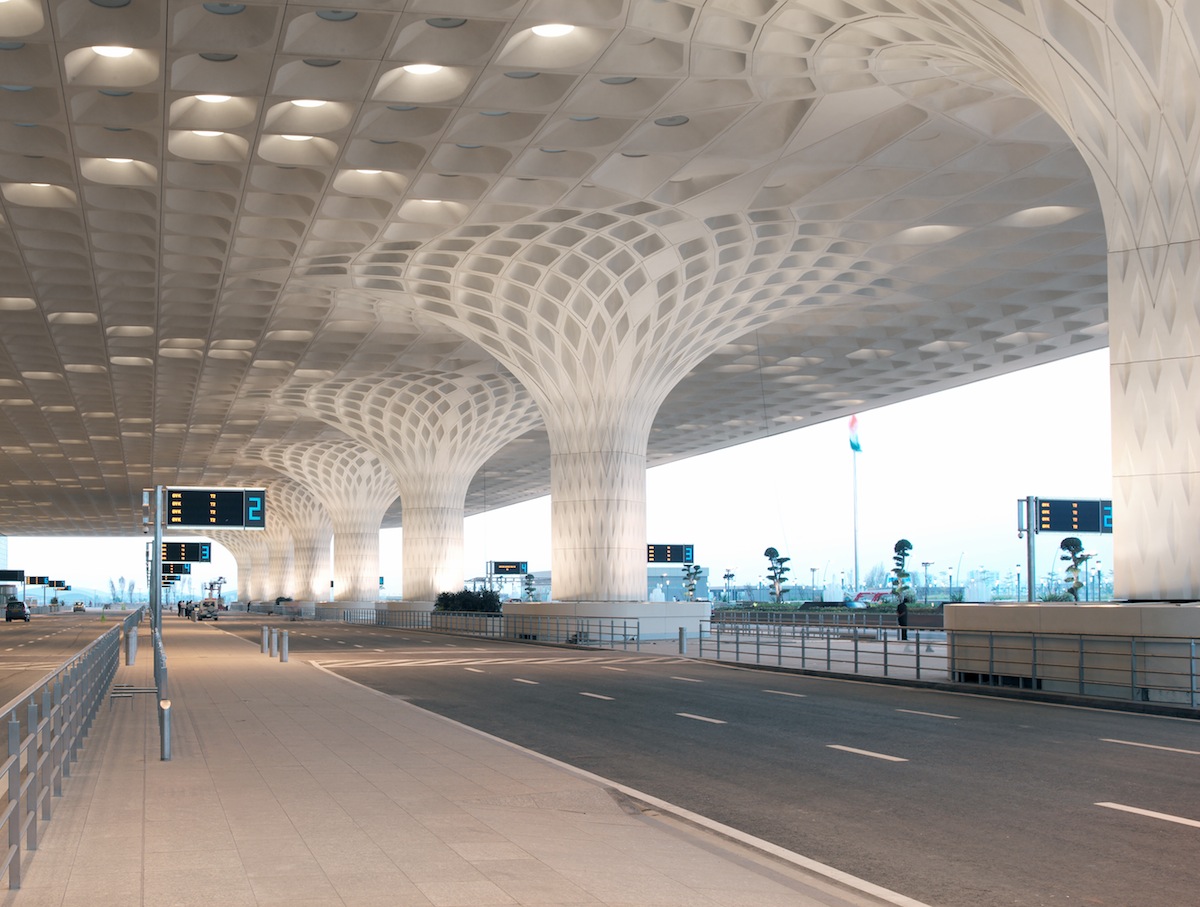
The fractal canopy extends over the roadway for arrivals in order to protect travelers from the weather. Image courtesy of SOM; Photographer, Robert Polidori / © Mumbai International Airport Pvt. Ltd.
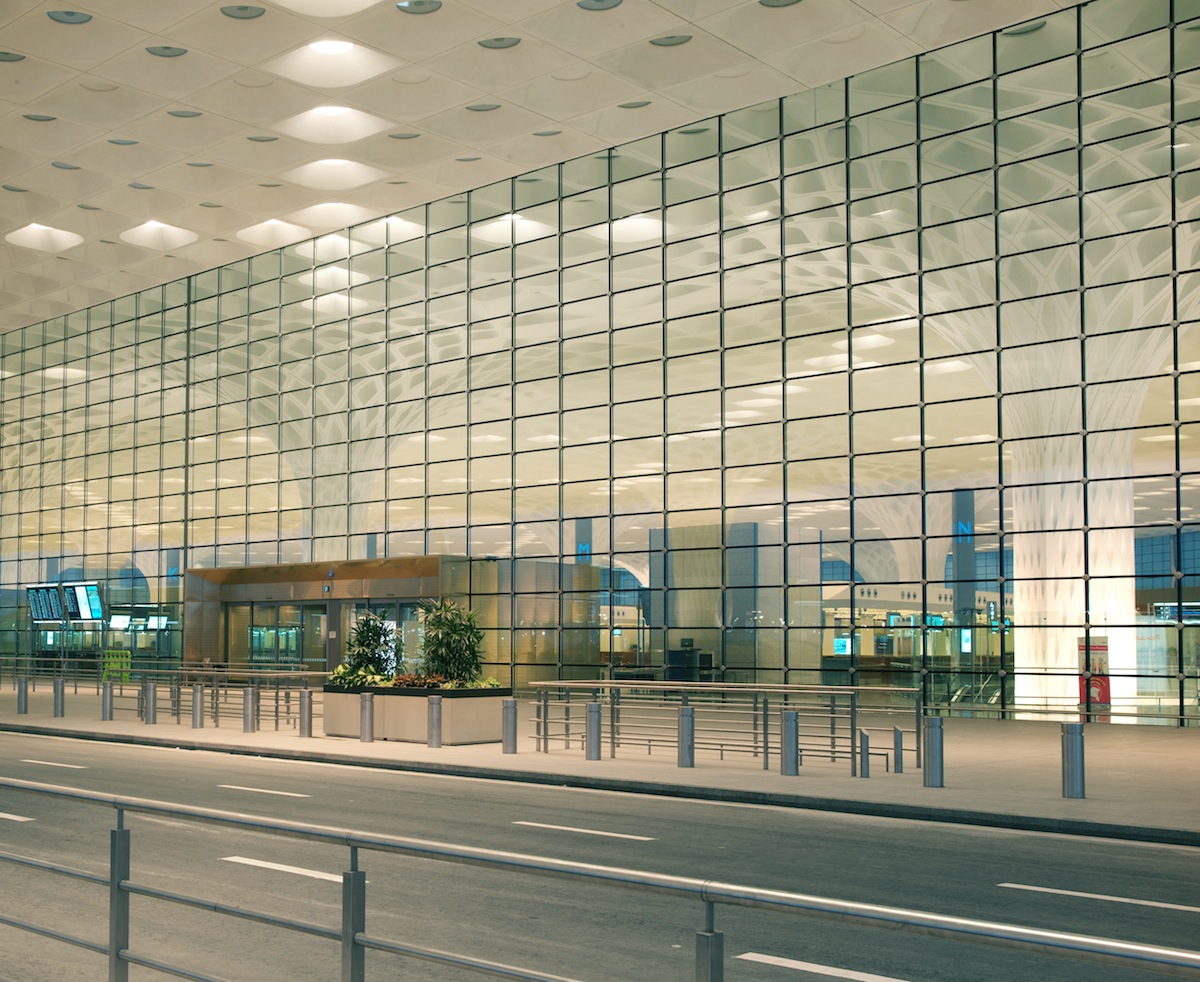
Image courtesy of SOM; Photographer, Robert Polidori /© Mumbai International Airport Pvt. Ltd.
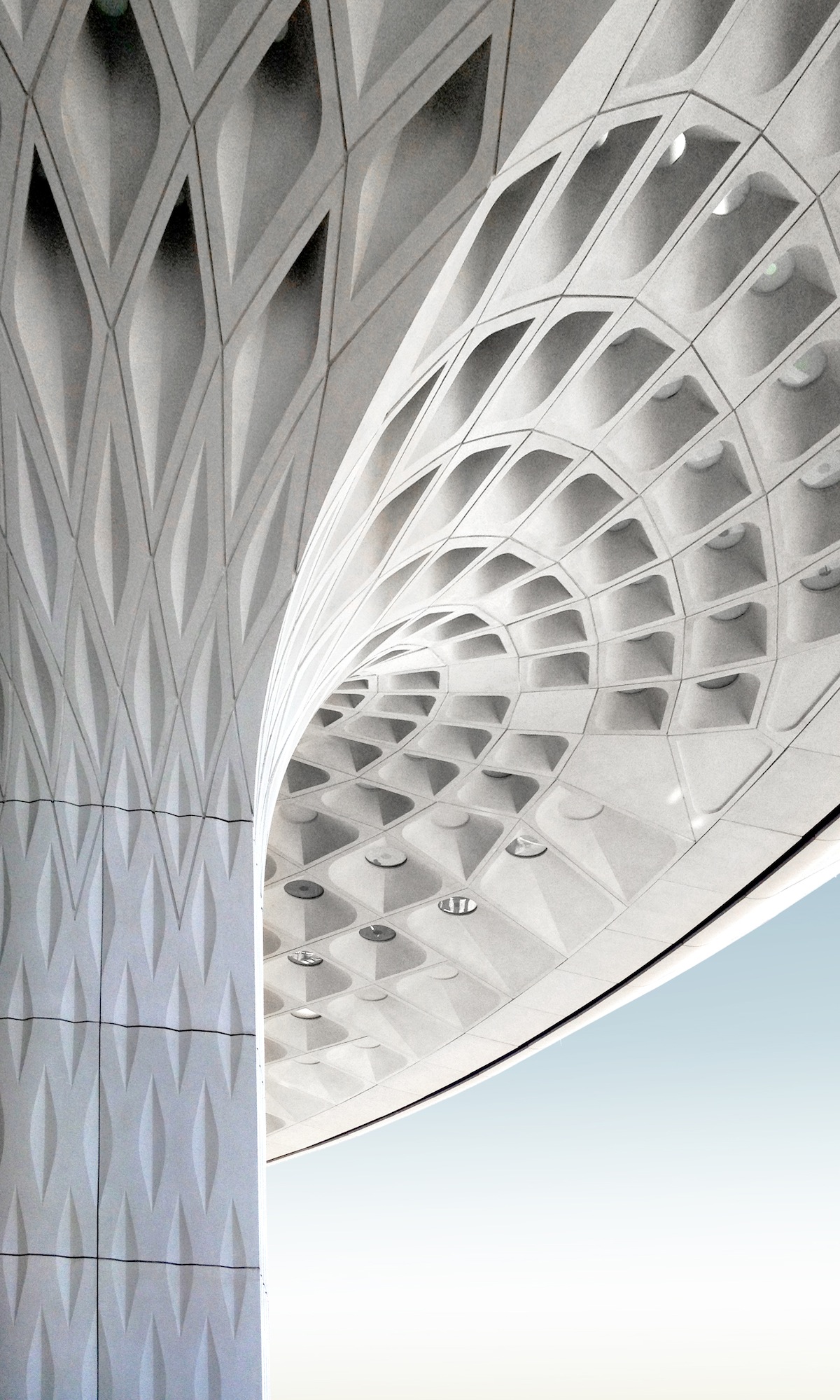
Image courtesy SOM / © SOM
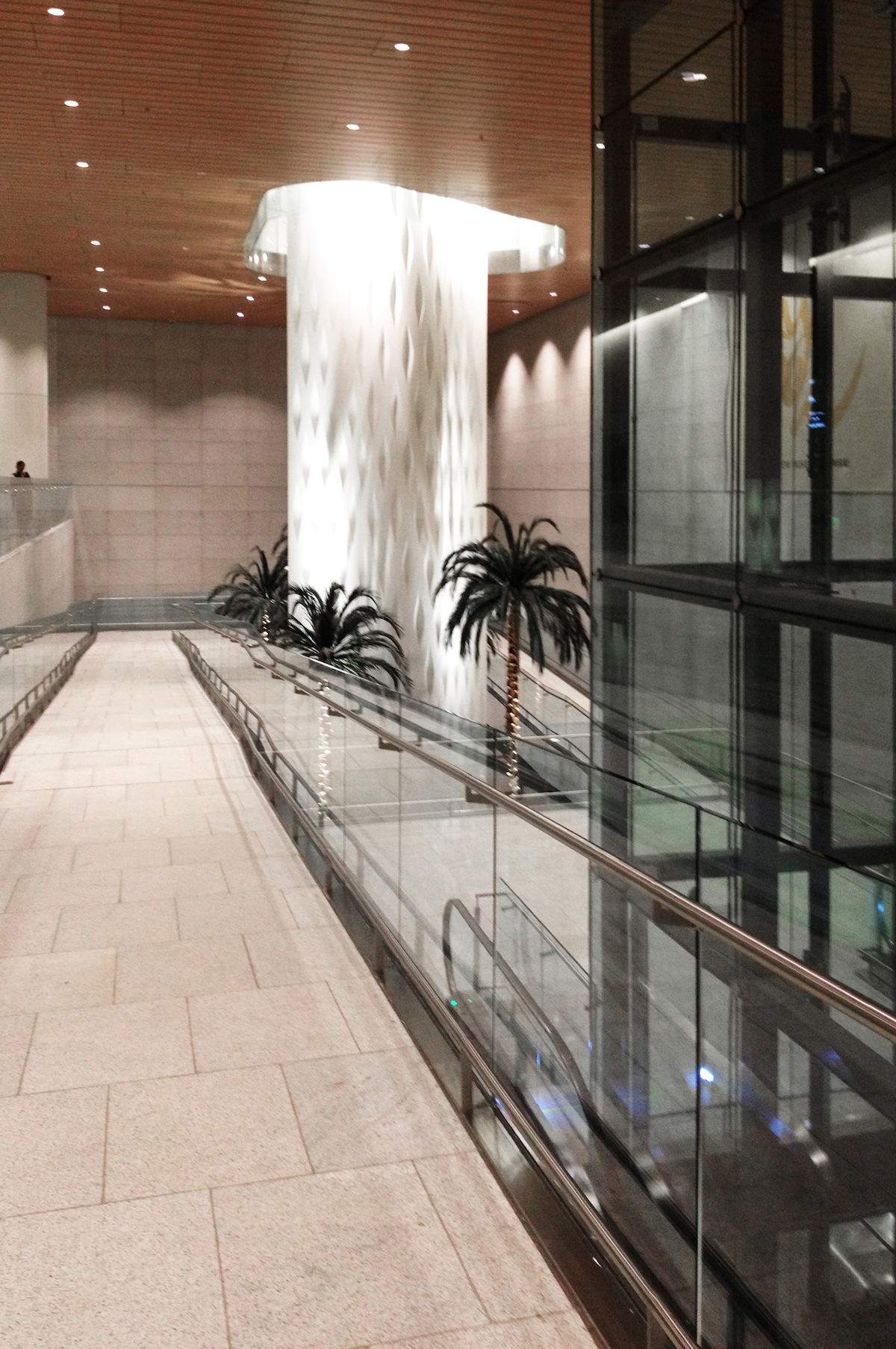
Image courtesy SOM / © SOM
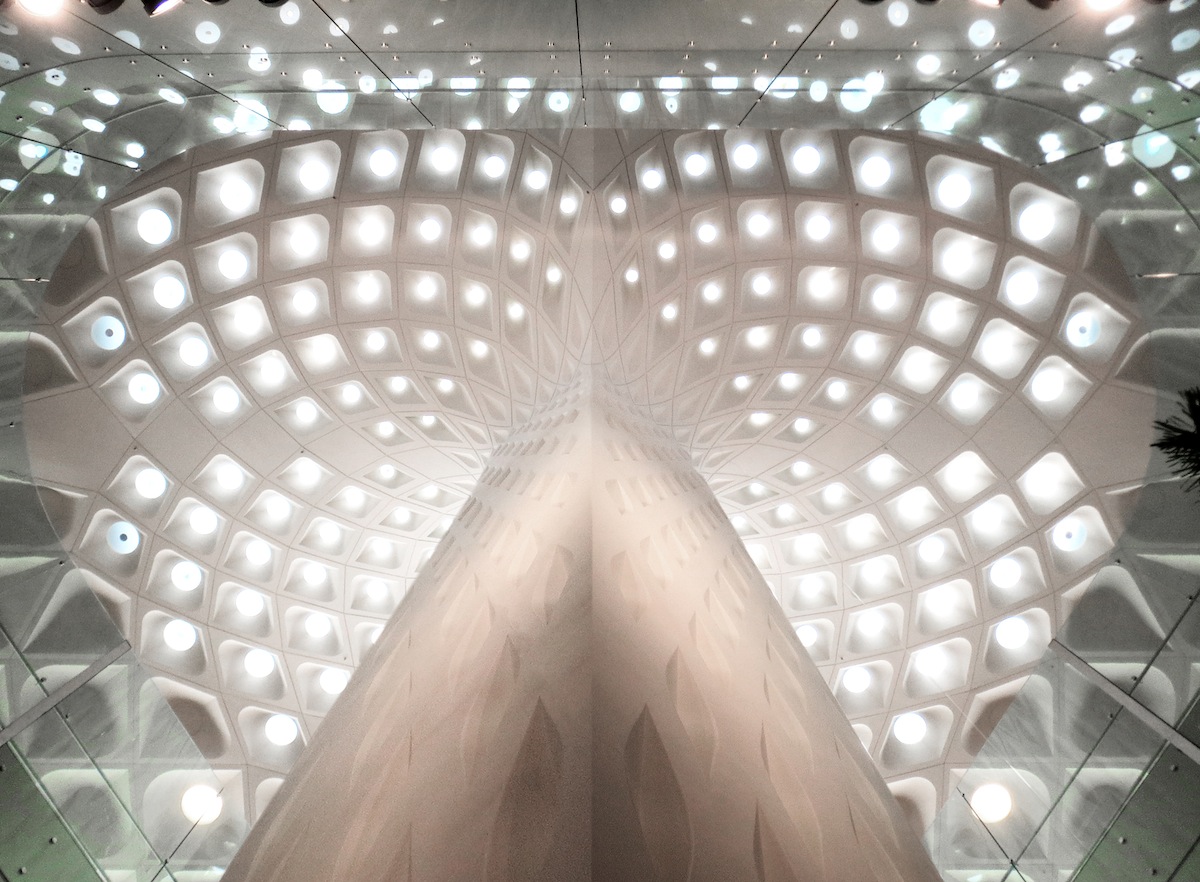
Image courtesy SOM / © SOM
Related Stories
Airports | Dec 6, 2016
Phoenix Sky Harbor International Airport creates a destination inside Terminal 3
DWL Architects, SmithGroupJJR, and Corgan design passenger experience that connects to the surrounding city and Sonoran desert landscape.
Airports | Nov 1, 2016
FAA forecasts a modest dip in spending for airports over next five years
Latest report based on surveys of 3,340 existing and proposed public-use airports.
Airports | Aug 31, 2016
Aircraft manufacturing facility innovation from The Austin Company
Austin’s many innovations contributed to the success of our clients by enabling them to operate in more efficient environments, optimize the flexibility of their operations, and meet aggressive schedules.
| Jul 29, 2016
AIRPORT FACILITIES GIANTS: Airports binge on construction during busy year for travel
Terminal construction will grow by nearly $1 billion this year, and it will keep increasing. Airports are expanding and modernizing their facilities to keep passengers moving.
Airports | Jun 1, 2016
LaGuardia Airport’s massive redevelopment begins construction
The development consortium has secured financing for the $4 billion project, and signed an operating lease through 2050.
Airports | Apr 6, 2016
HOK leads joint venture to expand and modernize Hartsfield-Jackson Atlanta International Airport’s domestic passenger terminal
The domestic passenger terminal is just the tip of the spear, as the world’s most traveled airport is about to undergo 20 years and $6 billion worth of changes.
Giants 400 | Jan 29, 2016
AIRPORT TERMINAL GIANTS: KPF, Jacobs, Hensel Phelps among top airport sector AEC firms
BD+C's rankings of the nation's largest airport sector design and construction firms, as reported in the 2015 Giants 300 Report
Metals | Jan 19, 2016
6 ways to use metal screens and mesh for best effect
From airy façades to wire mesh ceilings to screening walls, these projects show off the design possibilities with metal.
| Jan 14, 2016
How to succeed with EIFS: exterior insulation and finish systems
This AIA CES Discovery course discusses the six elements of an EIFS wall assembly; common EIFS failures and how to prevent them; and EIFS and sustainability.
Airports | Dec 13, 2015
Skybridge connects a terminal and airport on each side of the U.S.-Mexico border
Cross Border Xpress is the first phase of a larger development that will include hotels and offices.


